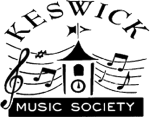The centrepiece of the concert was Benjamin Britten’s String Quartet No. 3 which was first performed just after the composer’s death in 1976. Hearing a live chamber music performance again after so long was as emotional as it was therapeutic; this programme was chillingly appropriate in view of the pandemic we are enduring. Cellist Felix Hughes (no relation) introduced the quartet as written by Britten after unsuccessful surgery and when he must have been aware of his own mortality. It is a more contemporary exploration of the themes of illness and death than the well-known Mahler Symphony No. 9, that composer’s last completed symphony.
To my ear, Britten uses standard musical forms and twists them to his exploration. The first movement to me weaves the themes of health and illness in a perversion of classic sonata form. If there is a catharsis, it is in the Burlesque movement that is typical joyous Britten. The final movement’s cello recitative recalls the cello and tenor recitative of Beethoven’s last symphony but in Britten’s last quartet this leads to a warped passacaglia descending – despite moments of remission – into chromatic chaos and rhythmic degeneration, portraying dying.
This was an intense performance of a work so relevant to our times; that very many of the audience were in tears at the end of the performance is tribute to the sensitivity and dynamism of the Elmore Quartet’s playing and Britten’s music’s relevance today.
Webern: Lansamer Satz. A complex and joyous piece to open their programme, the Elmore Quartet showed their spirit and enjoyment of the music.
Beethoven’s String Quartet in A minor, Op. 132, played after the interval, really showcased the Elmore Quartet’s lyrical ensemble and skill at keeping a flowing line running through musical changes or musical question and response; the acoustic helped it but also highlighting the precision of their playing.
The Elmore players clearly appreciated playing to this attentive and intelligent audience who clearly understood both the cerebral late Beethoven and the intense twentieth century repertoire; the Britten was published in the lifetime of many of us present. The Elmore Quartet feel a direct connection with the composer and his friend Norbert Brainin of the Amadeus Quartet through their teachers and mentors at the Royal Northern College of Music.
This was Keswick Music Society’s first concert since winter last year. It was a good turnout on one of the coldest nights so far this autumn, especially as there is currently limited heating in St. John’s church due to a fault.
A modest programme is planned for early 2022 and is expected to continue in the magnificent setting of St John’s parish church. The acoustics are excellent with an absence of background noise which is exceptional, giving a clarity and directness to the sound. In the case of tonight’s concert this highlighted the sensitivity, understanding and vigour of the Elmore Quartet players.
Great that Keswick Music Soc is back and still with adventurous repertoire performed at the highest level.
The Elmore String Quartet (Xander Croft, Pijus Jonušas, Ben Kearsley, Felix Hughes)
Parish church of Keswick, St. John
Webern: Langsamer Satz
Britten: String Quartet No. 3
Beethoven: Op. 132 No. 15 in A minor
